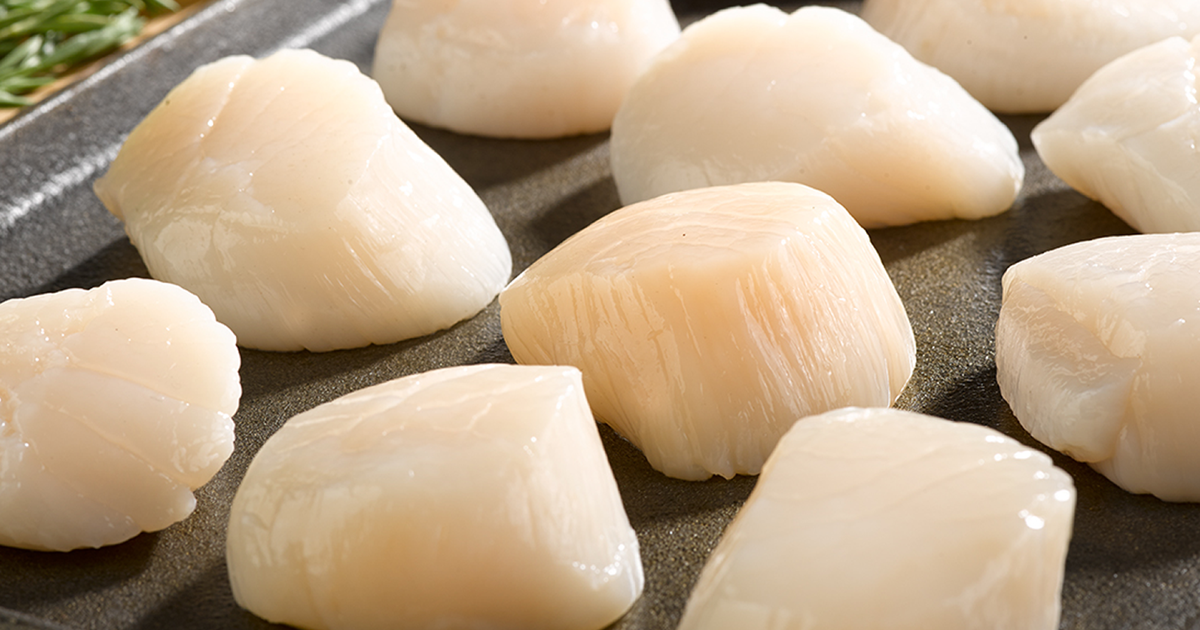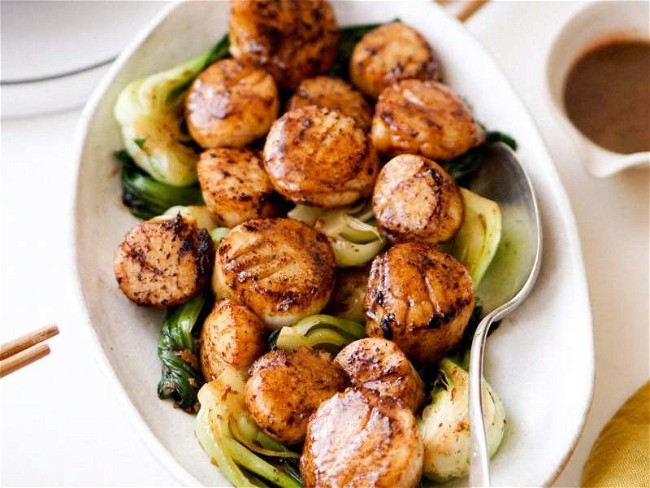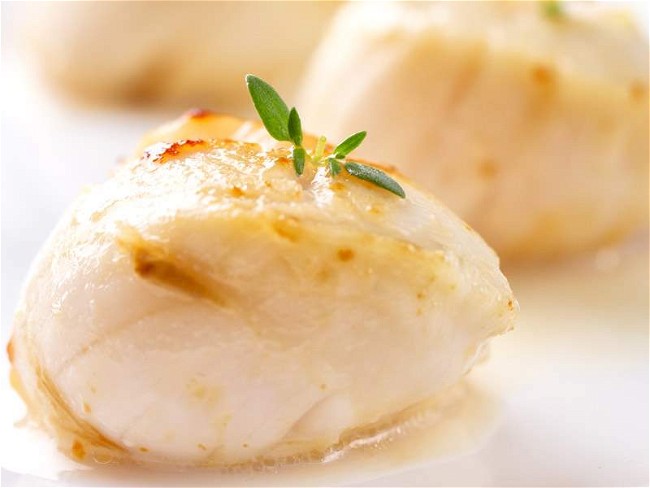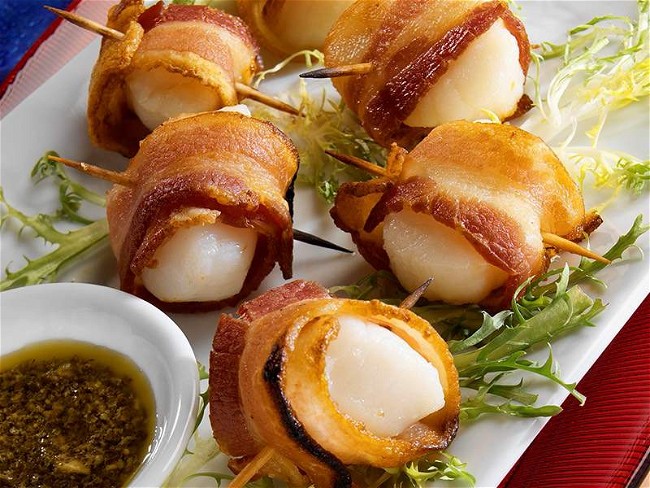Your Essential Guide to Scallops

Scallops are a true delicacy and one of our best sellers for good reason. Scallops are sweet, succulent, and delicious in so many seafood recipes. We love them quickly seared, fried, or grilled. They’re also delightful sautéed and added to pasta or risotto for a quick weeknight dinner. Let's get to know scallops with our Head of Quality Control, Robert DiGregorio.
Almost all fresh scallops eaten in the United States are East Coast sea scallops. In fact, the U.S. Atlantic scallop fishery is the largest wild scallop fishery in the world. They’re fished from the Gulf of St. Lawrence to Cape Hatteras, with New Jersey and Massachusetts being the largest producers.
In 2019, 62.5 million pounds of scallops were harvested, which sounds like a lot, but like all U.S. fisheries, it is highly regulated and closely watched. In 1994, a new set of management regulations were implemented to curb overfishing. There was a moratorium on permits, limited fishing days at sea, gear and crew restrictions, and certain areas closed completely. And it all paid off. Within the first ten years of implementing these rules, the sea scallop population on Georges Bank increased 18fold and by eightfold in the Mid-Atlantic Bight. Since 2015, TDDs (turtle deflector dredges) have been added to offshore equipment to reduce sea turtle mortality, leading to a great reduction in sea turtles getting caught in the gear. Federal regulators now consider the fishery healthy, not overfished, and not subject to overfishing. So we can all enjoy wild sea scallops for sale like the ones we are proud to offer at Fulton Fish Market.
What Are Scallops?
First things first: What is a scallop? Scallops are a type of mollusk, the phylum (species category) that includes clams, mussels, oysters, squid, octopus, snails, and sea slugs. Scallops have two hinged shells called bivalves, which the scallop opens and closes using a large adductor muscle. This is the white, meaty part of the scallop most easily recognizable on your dinner plate. Scallops also produce soft, red or white roe, which is a popular delicacy in parts of the world. The scallop uses its adductor muscle to swim by clapping its shells together quickly, propelling itself through the water!
What Do Scallops Taste Like?
The muscle that opens and shuts the shells, the adductor muscle, is creamy white with a firm texture and is light yet succulent at the same time. They are not overly fishy tasting, with a briny, slightly sweet flavor.
Besides dry sea scallops, there are also bay scallops. This particular scallop is found along the coast of Massachusetts to Long Island. Bay scallops are a real treat, especially Nantucket Bay scallops and Peconic Bay scallops. There are other kinds of bay scallops, for example, southern bays and calicos, but Nantucket Bay scallops and Peconic Bay scallops are unparalleled. They are smaller than sea scallops, and they have beautifully fluted shells, sometimes very colorful, roughly 2-2½ inches across. The larger sea scallop shells are typically 3-6 inches.
Bay scallops are smaller than sea scallops. Sea scallops are usually sized U10, U12, and 10-20, meaning under 10 to a pound, under 12 to a pound, or 10-20 to a pound. Bay scallops are 60 to a pound, sometimes smaller. They are fished inshore from small boats with hand rakes or small dredges. This resource is also highly regulated. The equipment is very specific so as not to disrupt the ocean floor and the eel grass, which is important to the bay scallop environment. Fishermen cannot fish if it’s too windy, rainy, or too cold because the bay scallop is very delicate and would die in the cold air. Bay scallop season usually runs from November until the end of March.
People from Massachusetts and Long Island have a long-standing rivalry, and the question of who has the better scallop is a matter of some very strong opinions. Technically, they are the same animal, but their merroir makes all the difference. Like oysters, the water temperature, salinity, environment, plankton, mud, and other factors all lend to the subtle differences in flavor. Despite it all, they are both firm, very sweet, and succulent, like briny candy. They are best enjoyed seared over high heat or even raw. The less you do to scallops, the better they are!
Are Scallops Healthy?
Yes, scallops are healthy, so go ahead and enjoy more of these beautiful shellfish. Scallops are high in protein, low in fat and calories, and full of vitamins and minerals, including vitamin B12, selenium, and zinc.
According to the USDA Nutritional Database, scallops provide good amounts of thiamin (vitamin B1), niacin (vitamin B3), iron, and phosphorus, as well as many other vitamins and minerals in smaller concentrations.
Where Do Scallops Come From?
Most scallops consumed worldwide come from scallop fisheries along the coasts of North America, Europe, and Asia. Scallops can be cultivated or caught wild. Farmed, or cultured, scallops are generally farmed on ropes near shorelines. Caught scallops are usually held in cages or nets and then lifted onto boats when full.
What Do Scallops Eat?
Scallop diets vary by species, but most scallops consume plankton, algae, and small sea creatures such as crustaceans and cephalopods. The giant scallop (Pecten Maximus) is even able to filter feed tiny particles like bacteria from the water. Scallops are extremely efficient at converting plankton into scallop meat, with this conversion rate being better than any other bivalve.
What is the Difference Between Wet and Dry Scallops?
Wet scallops are treated with water and a chemical solution (sodium tripolyphosphate, or STPP) to preserve and keep them white. They have a faint chemical taste and are near-impossible to sear because of the high water content. They release water when cooked, causing them to steam instead of sear.
At Fulton Fish Market, we only sell dry scallops, which always sear to golden perfection.
Fun fact: Scallops aren’t like clams or oysters. They’re not stuck in the mud, sedentary, waiting to be caught. Scallops have over 100 blue eyes, allowing them to detect predators getting too close. When they detect predators nearby, they can open and shut their shells very quickly and scoot away like a swimming castanet!
What About Skate Scallops?
Let me clear up something I have heard since I started in this business. I have never, in my whole life, seen or heard of anyone “punching” scallops out of skate wings or sharks or anything else. I’ve been in this business five decades, I’ve seen all the tricks, and I have never once seen such a thing. This rumor still persists on the internet and amongst the public. “Scallops” cut out of skate would not even remotely resemble real scallops. Real scallops have a nice firm texture; skate wings have long strands of muscles that easily separate. The wing itself has a cartilage in the middle of it, and nothing resembling a real scallop could be punched out of this, believe me. Urban myth, people.
Our Favorite Scallop Recipes
We love wild sea scallops for their sweet, juicy flavor and large size. We think a platter of these golden scallops served with steamed bok choy make a colorful and delicious centerpiece for a special occasion or an impressive weeknight dinner anytime.
Large and meaty dry sea scallops are perfect for this delicious air fryer recipe! Include the lemony-garlic sauce for some pizzazz.
Wow your dinner guests with our easy bacon-wrapped scallops recipe. They will never know it took only 30 minutes! We feel the best way to cook bacon-wrapped scallops is under the broiler, for quick cooking time and little mess. Serve with a flavorful pesto dipping sauce that complements the fresh flavor of the scallops. This will be your new dinner party go-to!



